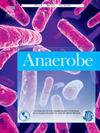Clostridioides (Clostridium) difficile in hospitalised children in Cambodia
IF 2.6
3区 生物学
Q3 MICROBIOLOGY
引用次数: 0
Abstract
Background
Children may play an important role in disseminating Clostridioides (Clostridium) difficile within hospital and community settings. In many parts of the world, there has been a recent increase in interest in C. difficile infection (CDI) in paediatric populations.
Objectives
This study aimed to investigate the prevalence of, risk factors for, and molecular types of C. difficile in hospitalised children in Cambodia.
Methods
Stool samples were collected from children at the National Paediatric Hospital in Phnom Penh, Cambodia, between June 2022 and March 2023, for C. difficile culture. Toxin gene PCR and PCR ribotyping were performed on all isolates.
Results
Of 122 hospitalised children recruited, C. difficile was identified in 47 (38.5 %). Toxigenic strains accounted for 25.5 % (12/47), with ribotype (RT) 012 the most predominant (7/12), followed by RTs 014/020 (3/12) and 017 (1/12). Non-toxigenic strains were dominated by RTs QX011, QX675 and 009/QX107. Novel strains represented 70 % (33/47) of isolates. Significant risk factors included antimicrobial use in the week before detection (OR = 5.15; 95 %CI: 1.125–21.21) and current use of other medications (OR = 13.02, 95 %CI: 1.32–128.67). Diarrhoea and abdominal pain were negatively associated with the presence of C. difficile.
Conclusions
A high prevalence of C. difficile was found in hospitalised children, with a high proportion of non-toxigenic and novel strains. Larger studies are required with whole genome sequencing necessary for characterising novel strains and advancing molecular epidemiological research in Asia.
柬埔寨住院儿童中的难辨梭状芽胞杆菌
儿童可能在医院和社区环境中传播艰难梭菌(clostridiides difficile)发挥重要作用。在世界许多地区,最近对儿科人群中艰难梭菌感染(CDI)的关注有所增加。目的本研究旨在调查柬埔寨住院儿童中艰难梭菌的流行情况、危险因素和分子类型。方法于2022年6月至2023年3月在柬埔寨金边国立儿科医院收集儿童粪便样本,进行艰难梭菌培养。对所有分离株进行毒素基因PCR和PCR核型分析。结果122例住院儿童中,47例(38.5%)检出艰难梭菌。产毒菌株占25.5%(12/47),以rt012型(7/12)最多,其次为rt014 /020(3/12)和rt017(1/12)。非产毒菌株以RTs QX011、QX675和009/QX107为主。新型菌株占70%(33/47)。显著危险因素包括:检测前一周使用抗菌药物(OR = 5.15;95% CI: 1.125-21.21)和目前使用的其他药物(OR = 13.02, 95% CI: 1.32-128.67)。腹泻和腹痛与艰难梭菌的存在呈负相关。结论住院患儿难辨梭菌感染率较高,其中非产毒株和新型菌株比例较高。需要进行更大规模的研究,进行全基因组测序,以确定新菌株的特征并推进亚洲的分子流行病学研究。
本文章由计算机程序翻译,如有差异,请以英文原文为准。
求助全文
约1分钟内获得全文
求助全文
来源期刊

Anaerobe
生物-微生物学
CiteScore
5.20
自引率
8.70%
发文量
137
审稿时长
76 days
期刊介绍:
Anaerobe is essential reading for those who wish to remain at the forefront of discoveries relating to life processes of strictly anaerobes. The journal is multi-disciplinary, and provides a unique forum for those investigating anaerobic organisms that cause infections in humans and animals, as well as anaerobes that play roles in microbiomes or environmental processes.
Anaerobe publishes reviews, mini reviews, original research articles, notes and case reports. Relevant topics fall into the broad categories of anaerobes in human and animal diseases, anaerobes in the microbiome, anaerobes in the environment, diagnosis of anaerobes in clinical microbiology laboratories, molecular biology, genetics, pathogenesis, toxins and antibiotic susceptibility of anaerobic bacteria.
 求助内容:
求助内容: 应助结果提醒方式:
应助结果提醒方式:


